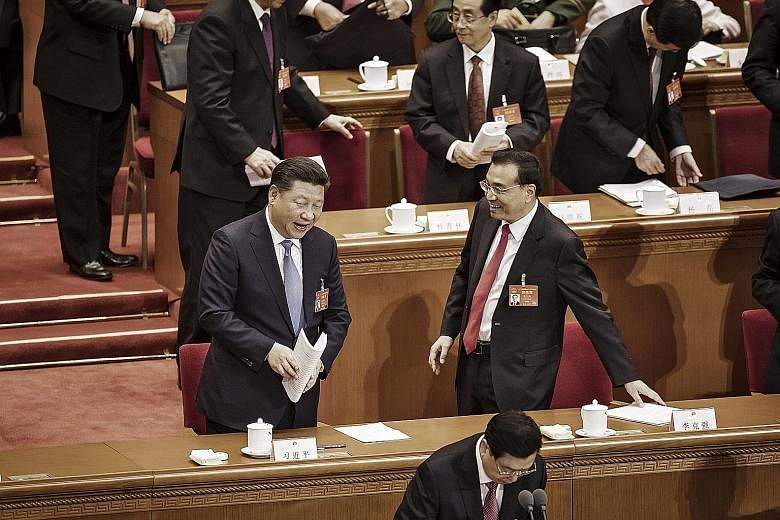In a year when a crucial leadership transition will take place, China has set a growth target of around 6.5 per cent and a work plan that is calculated to maintain stability while not losing sight of longer- term reforms.
After the economy registered its lowest growth rate in 26 years of 6.7 per cent last year, Chinese Premier Li Keqiang yesterday set a lower target of "around 6.5 per cent, or higher if possible" amid continued sluggish global growth.
He said: "Stability is of overriding importance. We should ensure stable growth, maintain employment and prevent risks."
Mr Li was giving his government work report at the opening of the National People's Congress, China's Parliament, yesterday.
A key objective of stable growth is job creation, and the aim for this year is to create 11 million urban jobs. This is one million more than last year's target, but lower than the actual number of jobs created last year - 13.14 million.
The urban unemployment target has been kept at 4.5 per cent, the same as last year's figure. Last year's actual urban unemployment rate was 4.02 per cent.
Mr Li touched on issues close to the people's hearts, including housing. The plan is to have targeted measures to bring down housing prices after these rose 12.4 per cent last year.
The Premier also promised to "make our skies blue again" in the face of people's frustration over toxic smog that often pollutes the country's cities and industrial areas.
Deepening of supply-side structural reforms - to cut excess production capacity and develop new growth drivers - is also on the cards.
A focus of such reform this year is agriculture to "create more channels for rural residents to find employment and increase their incomes", said Mr Li.
Poverty alleviation is another main task, particularly with a view to meeting the target of becoming a "moderately prosperous society in all respects" by 2020.
Beyond the mainland, Mr Li touched on Hong Kong and Macau, promising to apply "steadfastly" the "one country, two systems" principle under which the two special administrative regions are to enjoy a high degree of autonomy.
For the first time, though, he alluded to the nascent separatist movement in Hong Kong, warning: "The notion of Hong Kong independence will lead nowhere."
Following student-led protests in 2014 to agitate for greater political freedom, some Hong Kongers started to call for the city's independence.
On the international front, Mr Li said China was ready to join hands with other countries to "conclude talks as soon as possible for the Regional Comprehensive Economic Partnership and advance the development of the Free Trade Area of the Asia-Pacific".
Both are China-led regional free-trade deals that have come to the fore after the United States pulled out of the 12-nation Trans-Pacific Partnership, putting the signed pact in jeopardy.
This was as President Xi Jinping yesterday said China would continue to open up, particularly to further liberalise and facilitate trade and investment.

